Ditapis dengan

Inovasi Birokarasi; Membuat Birokrat Lebih Bermakna
Siapa bilang birokrat tidak kerja keras? siapa bilang birokrat tidak rajin? banyak birokrat harus berangkat dari rumahnya pukul 5 pagi, kemudian pulang setelah pukul 10 malam. Siapa bilang birokrat tidak produktif? Birokrat kita banyak yang produktif. Banyak sekali regulasi yang dihasilkan, hingga menumpuk ratusan halaman laporan. Justru itulah masalahnya. Birokrat terus menerus terjebak dalam…
- Edisi
- -
- ISBN/ISSN
- 978-602-481-363-5
- Deskripsi Fisik
- 219p:23cm
- Judul Seri
- -
- No. Panggil
- 351 NUR (1) i
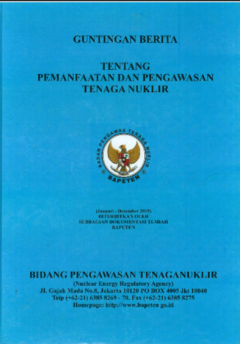
Guntingan Berita Ketenaganukliran : Periode Januari S.D Desember 2015
Sepanjang tahun 2015 berita tentang ketenaganukliran dari berbagai media massa khususnya cetak mencakup energi nuklir, PLTN, reaktor nuklir, senjata, kemanan nuklir, teknologi nuklir, perundingan nuklir dan masih banyak lainnya. Kliping ketenaganukliran ini teridiri dari 156 judul, 230 halaman meliputi berita dan opini dari pakar. Kliping ketanaganukliran ini menarik untuk dibaca bagi para pe…
- Edisi
- -
- ISBN/ISSN
- -
- Deskripsi Fisik
- 233 p. : illus. ; 26,5 cm
- Judul Seri
- -
- No. Panggil
- 050 BAP G
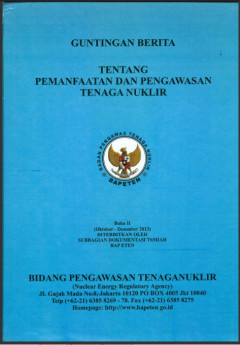
Guntingan Berita Ketenaganukliran Buku.II: Periode Oktober s.d Desember 2013
- Edisi
- -
- ISBN/ISSN
- -
- Deskripsi Fisik
- Diskripsi fisik 215 p. : illus. ; 26,5 cm
- Judul Seri
- -
- No. Panggil
- 050 BAP G
- Edisi
- -
- ISBN/ISSN
- -
- Deskripsi Fisik
- Diskripsi fisik 215 p. : illus. ; 26,5 cm
- Judul Seri
- -
- No. Panggil
- 050 BAP G
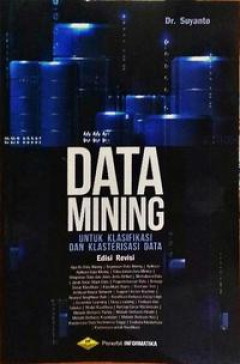
Data Mining Untuk Klasifikasi dan Klasterisasi data
- Edisi
- Revisi
- ISBN/ISSN
- 9786026232977
- Deskripsi Fisik
- 414 hal, ilus.:23 cm
- Judul Seri
- -
- No. Panggil
- 006.31
- Edisi
- Revisi
- ISBN/ISSN
- 9786026232977
- Deskripsi Fisik
- 414 hal, ilus.:23 cm
- Judul Seri
- -
- No. Panggil
- 006.31
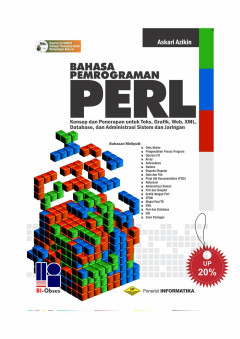
Bahasa Pemrograman Perl
Mengutip pernyataan Larry Wall, "Kami dapat mengajari Anda bagaimana kami melukis, tapi kami tidak dapat mengajari Anda bagaimana Anda melukis". Adalah ungkapan yang sangat menarik dan merupakan kesimpulan akhir dari isi buku ini. Pembaca tentunya akan menyelami bagaimana gaya saya memrogram dalam bahasa Perl, dan Anda juga tentunya akan memiliki gaya tersendiri dalam memrogram nantinya. Mem…
- Edisi
- 1
- ISBN/ISSN
- 9786021514030
- Deskripsi Fisik
- 378 Hal, Illus
- Judul Seri
- -
- No. Panggil
- 001
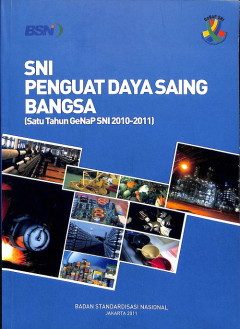
SNI Penguat Daya Saing Bangsa (Satu Tahun Genap SNI 2010-2011)
-
- Edisi
- -
- ISBN/ISSN
- 9786029394016
- Deskripsi Fisik
- 116 p. : Illus. ; 24,5 cm
- Judul Seri
- -
- No. Panggil
- 351 BSN S

Guntingan Berita Tentang Pemanfaatan dan Pengawasan Tenaga Nuklir (Januari-De…
-
- Edisi
- -
- ISBN/ISSN
- -
- Deskripsi Fisik
- 1194 p : Illus. ; 29 cm
- Judul Seri
- Kliping ketenaganukliran
- No. Panggil
- 050 BAP G
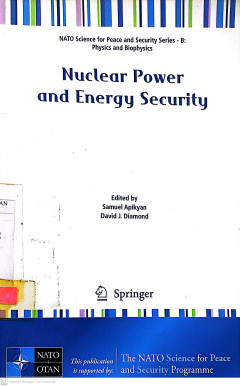
Nuclear Power and Energy Security: Proceedings of the NATO Advanced Research …
Proceedings contains material Chapter I – Developing the necessary infrastructure; Chapter II – The case for nuclear energy; and Chapter III – Applicable technology. (Jml)
- Edisi
- -
- ISBN/ISSN
- 9789048135035
- Deskripsi Fisik
- 282 p. : Illus. ; 23,5 cm
- Judul Seri
- -
- No. Panggil
- 621.48 PRO n
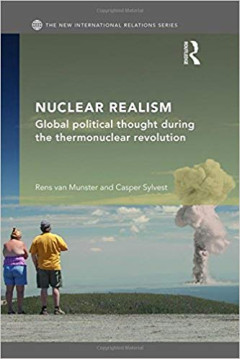
Nuclear Realism: Global Political Thought During the thermonuclear revolution
This nuclear realism book is a book that describes the thoughts of well-known intellectual writers on the challenges of world politics related to nuclear weapons. There are some pretty deep topics such as between the atom and the new knowledge economy, thermonuclear, security and freedom, technology and ecology, perspective of a better future (MM).
- Edisi
- -
- ISBN/ISSN
- 9781138477636
- Deskripsi Fisik
- xviii, 175p.:illus,23cm
- Judul Seri
- -
- No. Panggil
- 355.0217 MUN N
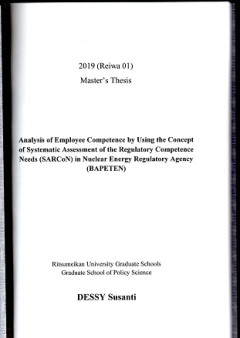
Analysis of Employee Competence by Using the Concept of Systematic assessment…
- Edisi
- -
- ISBN/ISSN
- -
- Deskripsi Fisik
- viii,84p;29x20cm
- Judul Seri
- -
- No. Panggil
- 352.6 SUS A
- Edisi
- -
- ISBN/ISSN
- -
- Deskripsi Fisik
- viii,84p;29x20cm
- Judul Seri
- -
- No. Panggil
- 352.6 SUS A
 Karya Umum
Karya Umum  Filsafat
Filsafat  Agama
Agama  Ilmu-ilmu Sosial
Ilmu-ilmu Sosial  Bahasa
Bahasa  Ilmu-ilmu Murni
Ilmu-ilmu Murni  Ilmu-ilmu Terapan
Ilmu-ilmu Terapan  Kesenian, Hiburan, dan Olahraga
Kesenian, Hiburan, dan Olahraga  Kesusastraan
Kesusastraan  Geografi dan Sejarah
Geografi dan Sejarah